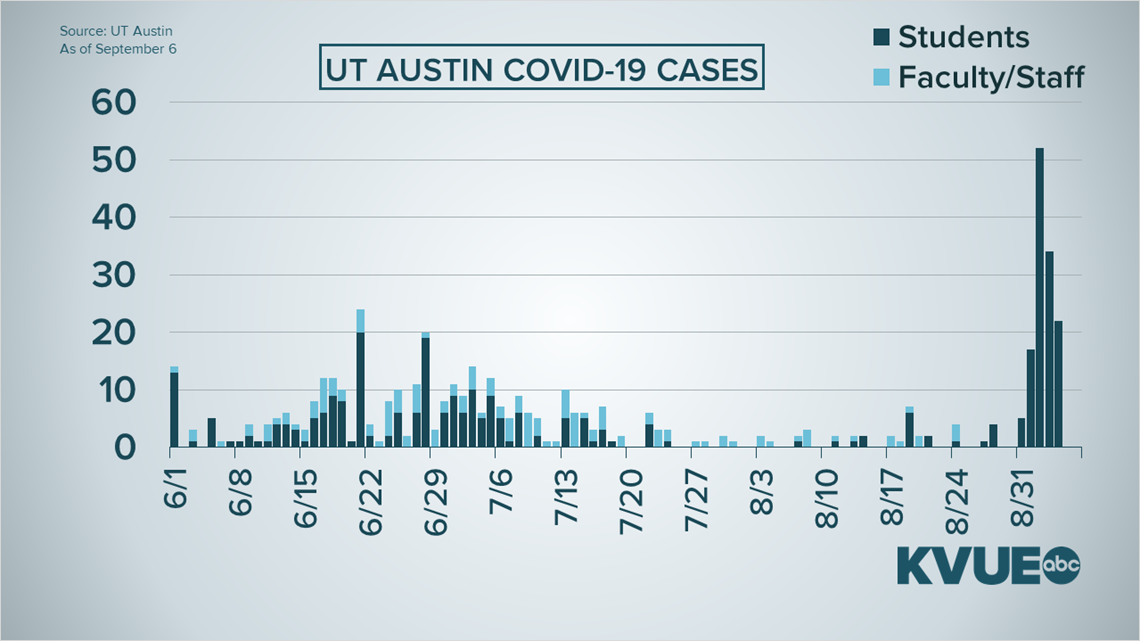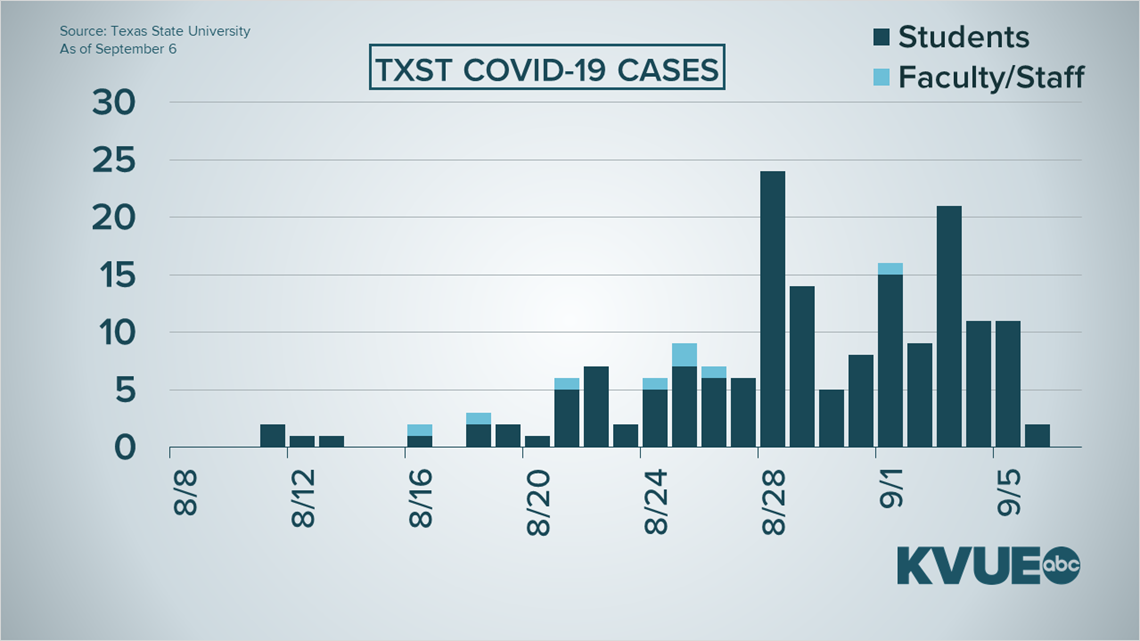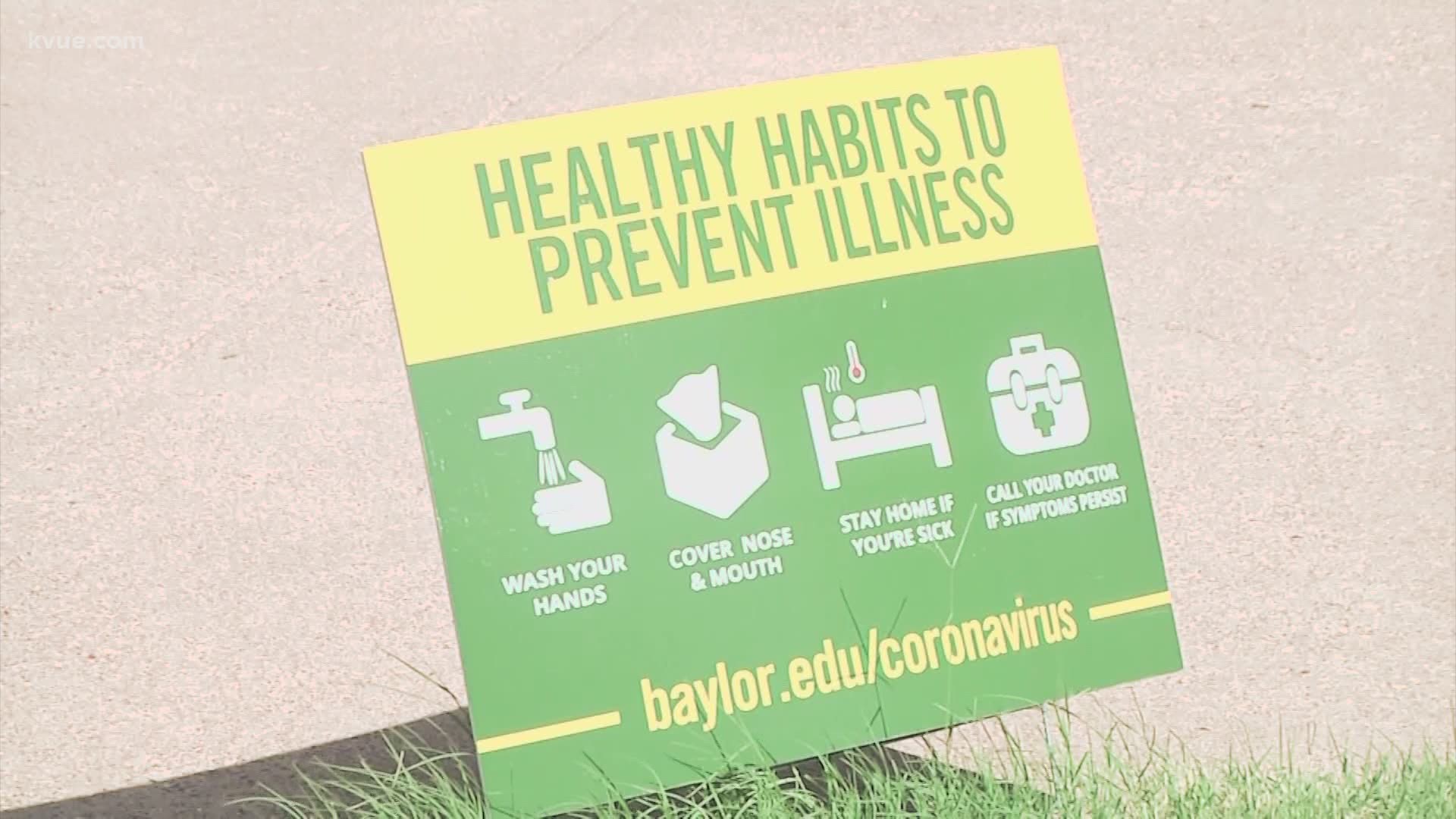AUSTIN, Texas — It doesn’t matter which college you visit, you’re likely to hear some students relieved to be back on campus.
“It's just been so nice just to leave my apartment and walk to a physical building and actually have a professor to look at who's not on the screen,” said Josh Martin, a senior at Baylor University.
People like Martin have a big responsibility: to protect the community from COVID-19.
“I’m going to be showing you guys a little bit at what the university looks like now,” Martin said in a back-to-college video for the university.
Martin takes the public through different areas of campus including classrooms, the cafeteria and the gym. He knows how easy it is to catch COVID-19.
“I had something for about 24 hours,” said Martin.
He said it felt like a brief cold, and took a COVID-19 test. Then, he lost his sense of taste and smell while he waited for the results.
“I found out eight days later that I had COVID, which was a weird kind of call to get because I lost symptoms,” said Martin.
“So, that's the biggest challenge,” said Angela Clendenin, PhD, MA., at Texas A&M.
Clendenin teaches risk communication and decision analysis.
“It's really hard to convince a college student not to go out, have fun and enjoy being around their friends ... when they don't feel bad,” said Clendenin.
Many universities in Texas make up a large chunk of the city’s population.
“The difference between a smaller community versus a metropolitan area is resources,” said Clendenin. “They have more resources that they can use for mitigation and trying to slow the cycle of transmission here. It's the reverse.”
Texas A&M partnered with the local health authority in Brazos County to assist in contract tracing.


Texas A&M tests students at random, and they set up some classes outside.
Baylor requires each student to have a negative COVID-19 test before going on campus, but even that doesn’t offer full protection. A week into the semester, the university shut town two residential floors after a COVID-19 outbreak.
Many universities and colleges have a COVID-19 reporting using dashboards. It shows parents, students and the community about the spread of the virus on campus.
As of Sept. 7:
- Texas Tech University shows 626 active positive cases on its dashboard.
- Texas State University's “Road Map” shows 318 positive cases since March.
- Texas A&M's dashboard shows 956 since August.
- Baylor is at 321 for active positive cases.
- University of Texas shows 623 cases since March at its Austin campus.




“We're trying to learn how to fly a plane when it's wheels up off the ground,” said Clendenin.
Martin said he appreciated Baylor’s safety guidelines. He said adhering to those guidelines is in line with his faith. He may no longer be contagious, but he still wears a mask and keeps his distance.
“When you navigate it through the lens of loving one another, which is Christ’s greatest commandment, it becomes a much easier thing to do,” said Martin.
If you didn’t see your college dashboard in this report, search for a coronavirus page on the college or university’s website. If a dashboard isn’t easily found, let your campus know you’d like it implemented.
There is no requirement for a campus to post its COVID-19 statistics publicly.
PEOPLE ARE ALSO READING:

